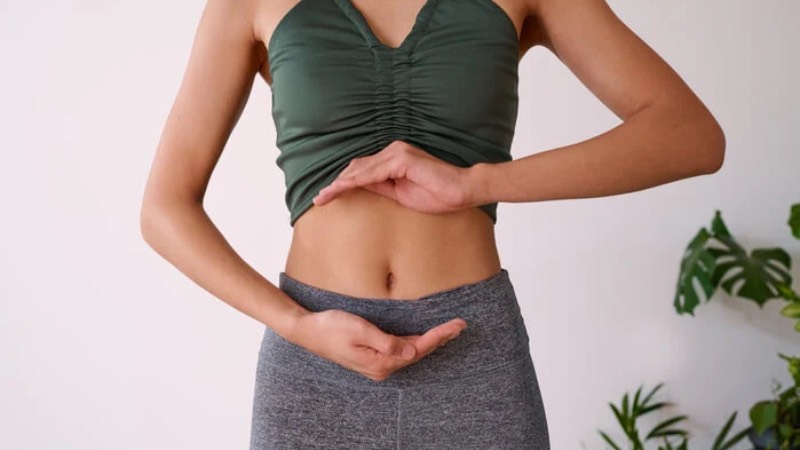Starting to work out can be fun and a bit scary for beginners. There are so many different exercises to try that make our body feel active. But, it can feel like a lot to take in at first. Still, once you start exercising, it becomes easier and even fun.
In this article, we will move through the concept of Fitness. Starting from what fitness is, we will cover such terms as types of fitness, fitness benefits, tips on how to get started with exercise, etc. Let’s take a step ahead and explore the fitness journey!
Contents
What is Fitness?
Fitness is all about physical, mental, and emotional terms so that you can do your everyday tasks well. It covers different parts of health, like how long your heart and lungs can keep going, how strong your muscles are, how flexible you are, how well you can balance, and how well your body works as a whole.
Physical fitness is usually judged by things like how long you can do cardio, how strong your muscles are, how flexible you are, and what your body is made up of. To get and stay fit, you need to exercise regularly and live a healthy lifestyle, which includes eating well, getting enough sleep, and managing stress.
What are the components of Fitness?
The U.S. Department of Health and Human Services has a set of exercise rules. According to these rules, there are five main parts to a Physical workout.
1. Cardiorespiratory Fitness: Your VO2 max is a common way to measure this. It’s how well your body can take in and use oxygen (which all your body parts need), and it’s directly linked to your health and how well you live your life, according to Abbie Smith-Ryan, a professor and the head of the Applied Physiology Lab at the University of North Carolina in Chapel Hill.
2. Musculoskeletal Fitness: This means it involves improving your muscle’s ability to lift weights, the capacity to keep going for a long time, and the force your muscles can produce.
3. Flexibility: This means how much your joints can move or bend in different directions.
4. Balance: This means how well you can keep your balance and not fall over.
5. Speed: This means how fast you can get your body to move from one place to another.
This means a well-known research study from 1985 explained the difference between “physical activity” (moving your body in a way that uses energy), “exercise” (a planned and organized way of moving your body), and “physical fitness.” The study defined “physical fitness” as the qualities or skills a person has or gains that allow them to do everyday tasks.
What are the types of Fitness?
Fitness is very important for our body because this is a good exercise routine, are listed in the Physical Activity Guidelines for Americans by the HHS. They should be included in your exercise routine every week.
1. Cardiovascular Fitness: Cardiovascular is a type of fitness that involves activities that increase your heart rate and help you build stamina. The American Heart Association recommends exercises like running, cycling, swimming, and fast walking. These cardio exercises are great for improving heart health, burning calories, and lifting your spirits.
2. Strength Training: Strength training is about using resistance to make your muscles stronger and last longer. You can do this with exercises like lifting weights, using your body weight, and working out with resistance bands. Not only does strength training help you build more muscle, but it also makes your bones denser, speeds up your metabolism, and improves your overall fitness.
The ACSM says that strength or resistance training is a type of exercise that’s meant to make your muscles fitter. You do this by working a muscle or group of muscles against some kind of outside force.
3. Flexibility and Mobility: Flexibility exercises are workouts that help your joints and muscles move more freely. Being flexible and able to move easily is important for staying healthy, as per the International Sports Sciences Association. Doing things like yoga, Pilates, and stretches can make you more flexible, lower your chance of getting hurt, and help you relax and let go of stress.
Studies show that regular workouts, especially ones that work on balance, can greatly lower the chance of falls for older people. Falls can lead to severe injuries and other problems, so this is important.
4. Balance and Stability: Training for balance and stability is really important for our overall physical health and to avoid injuries, especially as we get older. Doing exercises like tai chi, using balance boards, and working out with stability balls can help us move better, understand where our body is in space, and strengthen our core muscles.
5. Functional Fitness: Functional fitness is about doing exercises that are similar to everyday activities, which helps you do your daily tasks better and safer. Things like squats, lunges, and kettlebell exercises are examples. These kinds of workouts can help improve how you stand, your balance, and the health of your joints.
What are the Health Benefits of Fitness?
Getting fit is very important because it can greatly lower the chance of getting long-term illnesses like heart disease, type 2 diabetes, and even cancer. Being fit is one thing that can help prevent almost all kinds of diseases.
In 2007, the American College of Sports Medicine (ACSM) and the American Medical Association started a program called “Exercise is Medicine“. Their goal was to make checking for physical activity a regular part of doctor visits and to give everyone, no matter their fitness level, access to exercise resources.
1. Improved Cardiovascular Health: Doing physical activities regularly makes your heart stronger, helps to lower your blood pressure, and decreases the chances of getting heart disease, stroke, and other heart-related health problems.
2. Boost Mood: Research shows that regular exercise can help protect against depression and anxiety. Studies have found that working out can help control depression symptoms and even help in treating it, as mentioned in a scientific article.
3. Weight Management: Taking part in fitness activities helps you burn calories and keep a healthy weight. When you pair regular exercise with a balanced diet, it becomes a key part of reaching and keeping up with your weight loss goals.
4. Quality Sleep: Regular exercise can help you sleep better at night. Out of 34 studies reviewed, 29 found that exercise improved sleep quality and led to longer periods of sleep. It might help adjust your body’s internal clock (so you’re awake and sleepy when you should be), cause changes in your brain that promote sleep, and, as previous research suggests, it can reduce anxiety before sleep that might otherwise keep you awake.
5. Enhanced Mental Health: When you exercise, your body releases chemicals called endorphins that make you feel happier and less stressed. Exercise also helps you think better and sleep more soundly.
6. Increased Muscle Strength and Bone Density: Strength training helps your muscles grow and makes your bones stronger. This can lower the chance of getting weak bones and breaking them, especially for older people.
7. Improved Quality of Life: Exercising regularly helps you move better and do things on your own. This can make your life better, especially as you get older.
8. Long-Term Health: Exercise is good for your brain and bones, helps keep your muscles strong, and can lower the chance of getting many diseases, including cancer and stroke. A study of over 116,000 adults found that doing the suggested 150 to 300 minutes of exercise each week can lower the chance of dying from any cause by 19%.
9. Manage Chronic Disease: Exercise helps your body work better, including dealing with long-term health problems. The Centers for Disease Control and Prevention (CDC) says that if you have things like osteoarthritis, high blood pressure, type 2 diabetes, multiple sclerosis, Parkinson’s disease, dementia, or if you’ve had a stroke or cancer, being active can help.
Exercise can help reduce pain, make insulin work better and control blood sugar, help you move around, make your heart healthier, lower the chance of getting other long-term diseases, and help with mental health.
How to get started with Fitness?
1. Set Realistic Goals: Make fitness goals that are simple, achievable, and align with what you like, what you can do, and your everyday schedule.
2. Start Slowly: Begin with simple exercises and gradually increase their duration and intensity as you become more fit.
3. Mix It Up: Mix up your workouts with various fitness activities to keep them enjoyable and to prevent boredom or feeling stuck.
4. Listen to Your Body: Pay attention to how your body feels during and after exercise. Take rest when needed, and don’t push yourself to do a lot all at once.
5. Stay Consistent: Consistency is key to seeing progress. Aim to do at least 150 minutes of moderate aerobic exercise or 75 minutes of intense exercise each week. Also, include muscle-strengthening exercises in your routine at least two days a week.
What diet should consider for Fitness?
Before Workout: If you’re planning to work out soon after you get up in the morning, pay attention to how hungry you feel, suggests Jackie Dikos, a sports nutritionist and author of Finish Line Fueling. If you had a big or late dinner the previous night, you might not need to eat anything. But if you’re feeling hungry and have a tough workout coming up, a small snack could be necessary.
Having simple carbs like a banana or some cereal right before you exercise, or a mix of carbs and protein (like toast with nut butter) half an hour before, can give you the energy you need for your workout. If you’ve just had a meal, you might not need a snack at all.
During Workout: For shorter workouts, you don’t need to eat during the exercise. But for longer endurance workouts, you do. The International Society of Sports Nutrition suggests having 30 to 60 grams of carbs every hour, starting an hour into your workout. Sports drinks are one way to do this.
After Workout: If you’ve done a light to medium workout, like a 45-minute fast walk, you don’t need to eat right away, especially if you’re going to have a meal soon, says Dikos. But if you’ve just finished a high-intensity workout, or if you’re planning another workout later today or a hard one tomorrow, your body will need food. Dikos suggests having carbs equal to half a gram per pound of your body weight, along with 10 to 20 grams of protein.
Conclusion
Starting to work out is a great step that can make you feel good both physically and mentally. It’s all about knowing the different kinds of exercises you can do, seeing how they can help you, and learning some handy tips to get going. This can set you up for a life that’s healthier and more active. Don’t forget, the secret is to pick workouts you love and make them a regular part of your day-to-day life.

Dr. Roman Off is a multi-talented professional with expertise in psychology, nutrition, and content writing. She has a Doctorate in Clinical Psychology and is a psychologist with several years of experience helping individuals overcome mental health issues. In addition, Dr. Roman Off is a dietitian and nutritionist, specializing in helping clients achieve optimal health through proper nutrition and lifestyle changes.

